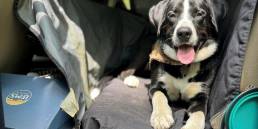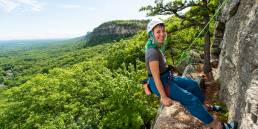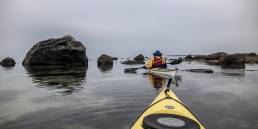This May, when you purchase a pour of Klinkii Cold IPA from Outer Light Brewing, you’re contributing to a global reforestation effort with roots in Mystic, Connecticut. The launch event, happening this Saturday from 3 to 6pm, will support Reforest The Tropics, a 501(c)3 organization with a vision for a sustainable future. I recently sat down with RTT’s Greg Powell to learn more about their unique reforestation model and the history of the organization.
goEast: Thanks for meeting today! Can you tell us about yourself and Reforest the Tropics?
Powell: I’m Greg Powell, Executive Director of Reforest The Tropics. I have worked with the organization since August 2013. Before that I worked for decades in Latin America starting as a Peace Corps Volunteer in Honduras then on various community development and health programs in Belize, Peru, Haiti, and the Dominican Republic. My passion has always been the environment so I jumped at the opportunity to work with Reforest The Tropics, where I was trained by RTT’s founder, Dr. Herster Barres.
goEast: What is the history/backstory of RTT?
Powell: Reforest The Tropics was formed by Dr. Barres in 1996, however the RTT story is much older. As a young United Nations FAO Forester based in Costa Rica in the late 1960s, Dr. Barres had an interest in seeing how much biomass, or quantity of organisms, he could accumulate in a given area. He experimented with hundreds of species to determine which grew fastest and which could work together. This research provided the foundation for the RTT forestry model and represents an important head start in the elaboration of a mixed-species model that efficiently captures carbon. Dr. Barres also understood that in order for the project to work, it had to makes sense for private landowners. The model needed to be attractive as an economic land use activity to attract the farmers who hold the deforested and degraded land which we need to target for reforestation. Over decades, Dr. Barres and RTT conducted research with a wide range of forest designs that could accomplish the original three research goals: One, a mixed-species forest that captures unprecedented levels of carbon. Two, a “permanent” forest that stores that carbon indefinitely. And three, a forest that generates competitive income for partnering landowners.
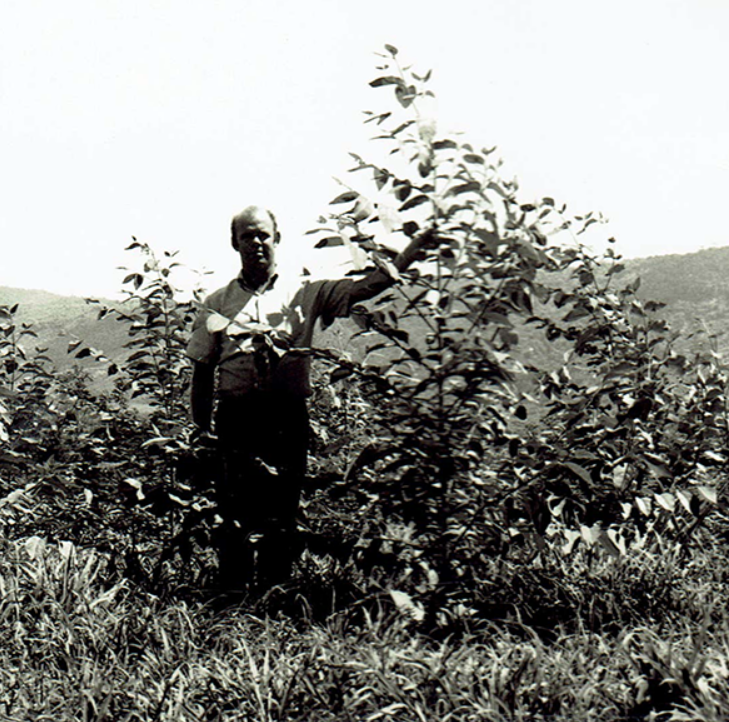
goEast: RTT is east coast-based with a global mission. Where in Costa Rica are your forests, and why reforestation in Costa Rica?
Powell: RTT began its research in Costa Rica due to Dr. Barres’ assignment with the United Nations and we have remained in the country for over 50 years. Reforestation as a mitigation tool is most efficient in the tropics— Trees grow unbelievably fast which allows us to offer affordable offsets for our forest sponsors. We plant our forests in most of the country, with the exception of the “dry tropical” regions. These regions have a dry season that is long enough that wildfires become a concern. RTT plants in the “humid tropics” exclusively. If a lightning bolt hits one of our trees, we only lose that tree and perhaps a few neighbors whereas in the dry tropics, lightning can result in the loss of hundreds of acres of forest.
goEast: Of all the reforestation programs available, what makes RTT unique?
Powell: The RTT model is unique for a number of reasons. Forestry is a long-term research proposition and designing a forest is surprisingly tricky. Each species introduced into a model creates a number of variables which can affect long term results. One design flaw can reveal itself 10 to 20 years down the road which can reduce the effectiveness of the project. As a result, most reforestation around the world and especially in the tropics are in the form of single-species monocultures. These forests have known outcomes in production. RTT wanted to improve on this approach and the decades-long head start in our research has allowed us to create a unique approach using a variety of species that still generates income for farms. RTT was the global pioneer in creating a biodiverse, mixed species model that can attract the participation of private landowners and capture unprecedented levels of carbon for the long-term. This model is so complex that few other organizations in the world are even attempting this approach.
goEast: This brew is named after the klinkii tree. Why is this species of particular interest to your program?
Powell: Perhaps the most meaningful outcome from Dr.Barres’ research was the identification of the klinkii tree (Araucaria hunsteinii) as a species that would allow RTT to accomplish it’s goals. It grows to up to 270 feet tall (with a specimen measured at 273 feet in its native Papua New Guinea), lives over 250 years, grows tremendously fast, adapts well to different soils, altitudes, and other climate conditions, is disease and pest resistant, has a narrow crown (as a rare tropical conifer, they can grow close together without stunting neighboring growth), produces valuable timber, and can be mixed effectively with almost all other tree species.
As one of Earth’s oldest tree species (estimated at 300 million years old) the Klinkii has survived multiple dramatic climate events in the past and is listed as a near-threatened species by the IUCN. They have also completely adapted to Costa Rica; they are a naturalized species that is non-invasive and contributes to the habitat for local fauna and, when mixed with other species, enhance the ecosystem and support wildlife. The klinkii is approved for planting by the government of Costa Rica and is found on the national registry of trees. RTT will continue to rely on klinkiis to capture and store more carbon for the long-term than many scientists even thought possible through reforestation.
All forestry models require thinning (selected harvesting) as the trees mature and grow close together—If some trees are not removed, the entire forest will stagnate in growth. Since we must thin our forests to accumulate more carbon, we may as well plant species that have a value. Through decades of research, RTT has found a mixture that works: Only one reforestation model is able to employ mixed-species designs to safely capture and indefinitely store enough carbon. That model is the legacy of Reforest The Tropics and the klinkii, above any other species, makes it possible.
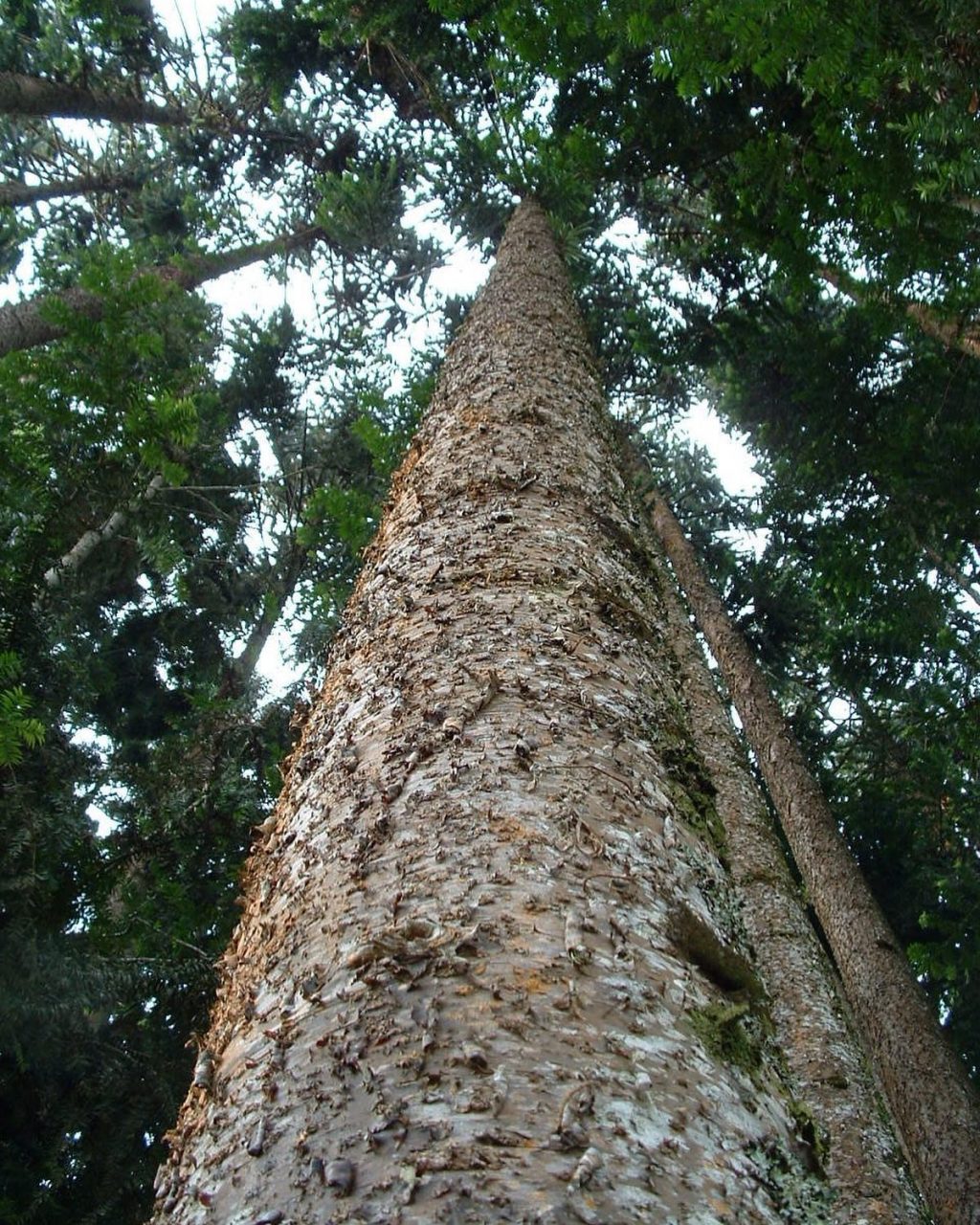
goEast: Who sponsors the forests? How can an individual become involved?
Powell: RTT’s forests are sponsored by a wide range of donors including small and large businesses, schools and universities, social groups, and individuals and families. No matter how efficient we are in our energy usage, we all have a carbon footprint. Tropical forests are a great way to balance those emissions. Forestry is a long-term program—RTT pledges to establish, maintain and manage each new forest for a minimum of 25 years, however, the forests are designed to remain productive indefinitely. Our plan is to enter into a series of 25-year contracts with both the farms and forest sponsors for the same forests. RTT requests $8500 per hectare (2.47 acres) planted which covers establishment and management for the initial 25-year agreement period.
goEast: Do you have any stats on CO2 sequestration in a given year? How much offsetting can one unit/hectare of forest produce?
Powell: RTT measures its forests each year and those measurements are audited by independent third parties every few years. We may be the only organization in the world that has decades of annual measurements on the same forest plots. We know very precisely how our forests are performing. At our last independent verification, we demonstrated an annual average capture of 23.8 metric tons per hectare per year. Most reforestation programs tend to capture 10 to 15 metric tons per hectare per year. Comparatively, an old growth primary rainforest may sequester an additional 3 to 5 metric tonnes each year and a secondary rainforest captures approximately 15 metric tonnes per hectare annually. The greater challenge in forestry is storing the captured carbon for the long-term. Not only does the RTT model capture considerably more CO2, but our model is productive for 4 to 5 times longer than conventional approaches, making it the world’s most effective long-term carbon capturing model.
goEast: How does RTT address and meet the needs of landowners and farmers in the program?
Powell: Most deforested land in the world is held by private landowners. We must elaborate a model that makes sense for these landowners and their families if we are to have any success in using tropical reforestation as a climate change mitigation tool. Without income, a farm will simply choose another activity for their land. RTT’s model is attractive to a landowner because we pay all the costs to establish a beautiful mixed species forest on their land. This is approximately $3000 per hectare in value. Once established, the forest can generate income through periodic harvesting. Every five or six years, we must remove approximately 15% of the forest’s volume in order to stimulate more long term growth and carbon capture. It is somewhat counterintuitive, but we must remove biomass to accumulate more biomass in the future. If we plant the right trees, a farmer can sell the timber that is extracted in local markets to earn a competitive income on his/her land. Our forests have many ancillary benefits as well. Air and water quality are improved, recreational and ecotourism opportunities are created as well. RTT forests help local communities by creating jobs. For every 15 to 20 hectares we plant, one permanent, full time position is created.
goEast: You have a great educational component to your program. What does that look like?
Powell: RTT visits schools in Connecticut, Rhode Island, and Massachusetts each year to educate about climate, forestry, and the environment in general. The education programs are tailored to the needs of each school. At the high end, we are visiting for up to 12 sessions that build on knowledge with each segment. Or we can visit a school once for an enrichment program—One of the more popular sessions includes a live videoconference with an RTT Forester in the field in Costa Rica. Students are able to ask questions to a professional in real time remotely. Students ask about everything from climate change and reforestation to animals and life in Costa Rica, making it a valuable cultural and educational exchange. In recent years, states have included more climate related science into curricula standards and RTT has been able to respond with a program that meets these standards. We also focus on training teachers so that they may deliver our program independent of RTT.
goEast: Will you be at the event this weekend?
Powell: Yes! I will be there with an informational table and will have tree saplings and event tees for fundraisers.

Ellen Estabrook
Ellen is a social media marketer who enjoys weekends spent unplugged in the woods. With backgrounds in psychology and counseling, she has a deep gratitude for the outdoors and its role in mental health and hopes to share that with others.
Related Posts
April 24, 2024
What to Bring When Road Tripping with Your Dog
Prepare for the ultimate road trip with…


